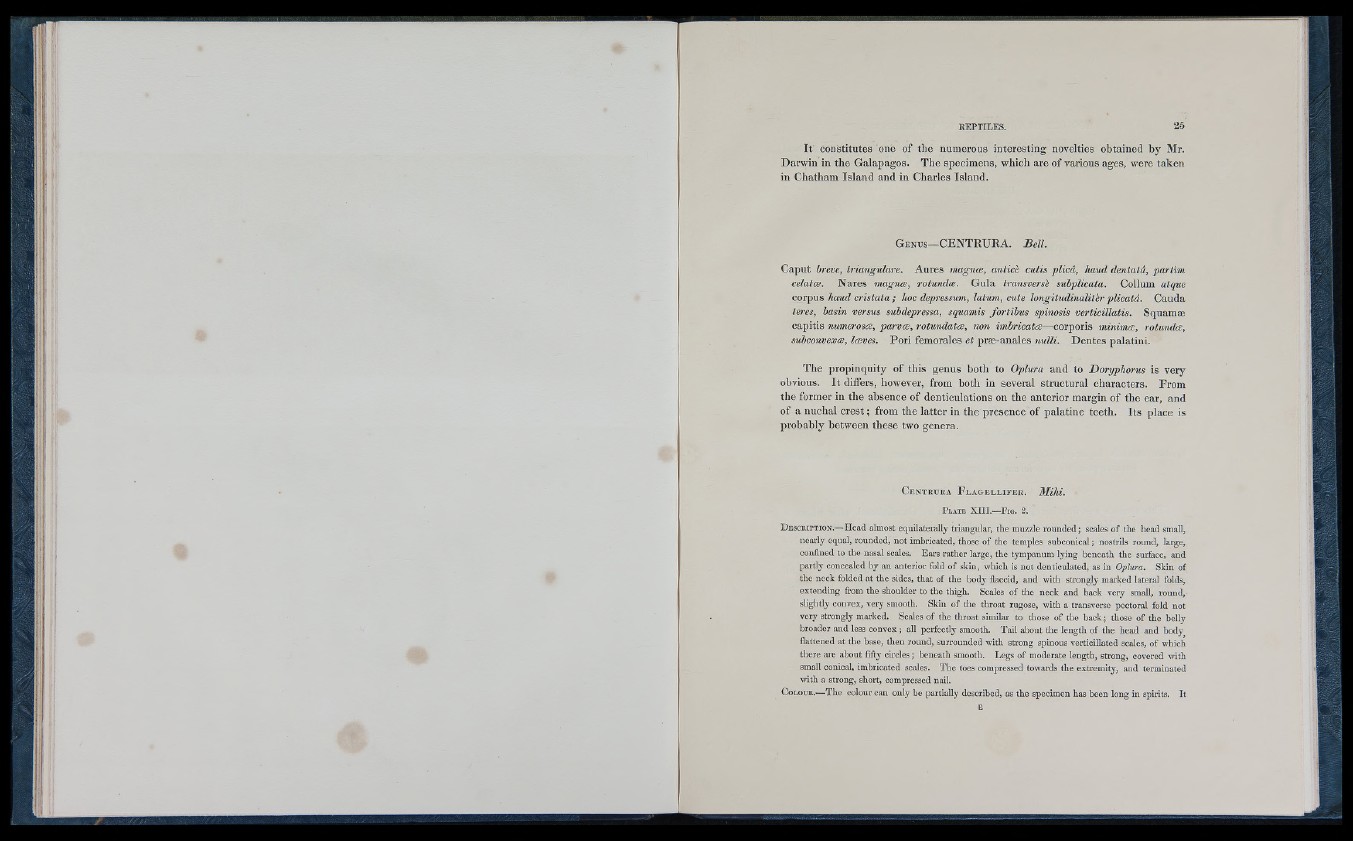
I t constitutes one of the numerous interesting novelties obtained by Mr.
Darwin in the Galapagos. The specimens, which are of various ages, were taken
in Chatham Island and in Charles Island.
G e n u s— CENTRURA. Bell.
Caput hreve, triangulare. Aures inagncB, antich cutis plica, hand dentata, partim
celatce. Nares magnce, rotundce. Gula transversè subplicata. Collum atque
corpus baud cristata ; hoc depressum, latum, cute longitudinalitèr plicata. Cauda
teres, basin versus subdepressa, squamis fortibus spinosis verticillatis. Squamae
capitis numeroscE, parvce, rotundatce, non imbricatcz—corporis minima:, rotundce,
subconvexce, Iceves. Pori femorales et prae-anales nulli. Dentes palatini.
The propinquity of this genus both to Oplura and to Doryphorus is very
obvious. I t differs, however, from both in several structural characters. From
the former in the absence of denticulations on the anterior margin of the ear, and
of a nuchal crest ; from the latter in the presence of palatine teeth. Its place is
probably between these two genera.
C e n t r u r a F l a g e l l i f e r . 3Uhi.
P late X I I I .—F ig . 2.
D e s c r ip t io n .— H e a d almost equilate rally triangular, th e muzzle ro u n d e d ; scales o f th e head small,
n ea rly equal, ro u nded, n o t imbricated, those o f th e temples su b co n ic a l; nostrils round, large,
confined to th e nasal scales. E a rs ra th e r large , th e tympanum ly in g b en e a th th e surface, an d
p artly concealed b y an a n te rio r fold o f skin, which is n o t d en ticu la te d , as in Oplura. S kin o f
th e n e c k folded a t th e sides, th a t o f th e b ody flaccid, an d with strongly marked lateral folds,
e x te n d in g from th e shoulder to th e th ig h . Scales o f th e n e c k a n d back very small, ro und,
slightly convex, very smooth. S kin o f th e th ro a t rugose, with a transverse pec toral fold not
very strongly marked. Scales o f th e th ro at similar to those o f the b a c k ; those o f th e belly
broader a n d less convex ; all perfec tly smooth. T a il about th e len g th o f th e h e a d a n d bod y
flattened a t th e base, th e n ro und, su rro u n d ed with s trong spinous vertic illated scales, o f which
th e re are ab o u t fifty c irc le s ; ben e ath smooth. L eg s o f moderate len g th , strong, covered with
small conical, imbricated scales. T h e toes compressed towards th e ex trem ity , an d terminated
with a strong, short, compressed nail.
C o lo u r .—T h e colour can only be partia lly described, as th e spec imen has been long in spirits. I t